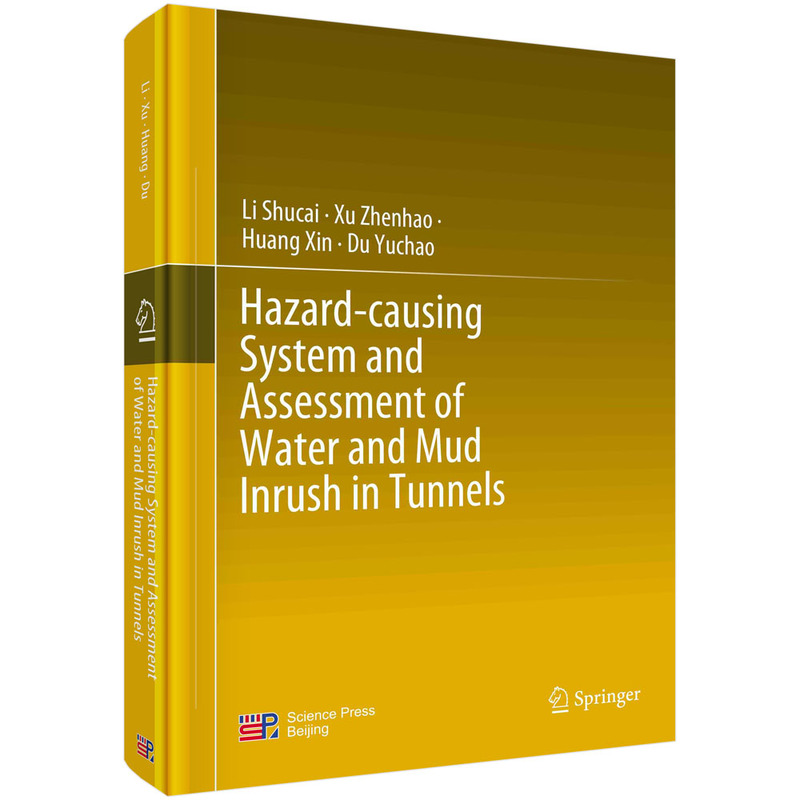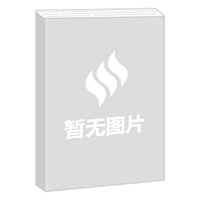
包邮隧道突水突泥致灾系统及孕灾评判(英文版)
1星价
¥224.3
(7.5折)
2星价¥224.3
定价¥299.0

暂无评论
图文详情
- ISBN:9787030770684
- 装帧:圆脊精装
- 册数:暂无
- 重量:暂无
- 开本:其他
- 页数:360
- 出版时间:2023-12-01
- 条形码:9787030770684 ; 978-7-03-077068-4
内容简介
本书共分八章,介绍了作者十余年来在隧道突水突泥致灾系统与孕灾评判方面取得的研究与应用成果。本书通过大量的案例调研与分析,在已有研究的基础上,提出了3类11型隧道突水突泥致灾系统和4种典型突水突泥孕灾模式,研究了隧道突水突泥致灾系统典型案例,论述了岩溶水系统类型、结构特征、宏观地质判识、工程识别、岩溶隧道选线原则与评价方法,形成了隧道突水突泥施工风险区间动态评估方法,建立了隧道突水突泥抗突评判方法,提出了集地质识别、物探识别和钻探识别为一体的隧道突水突泥致灾系统识别方法,构建了隧道突水突泥案例动态管理与分析平台。
目录
Preface
Chapter 1 Introduction
1.1 Background and Significance of Research on Water and Mud Inrush in Tunnels
1.2 Water and Mud Inrush Hazard-causing System and Resistance Body
1.2.1 Water and mud inrush hazard-causing system
1.2.2 Resistance body
1.3 Research on the Hazard-causing System of Water and Mud Inrush in Tunnels
1.4 Summary of Research on Construction Risk Dynamic Evaluation of Tunnel Water and Mud Inrush
1.5 Summary of Research on Identification Methods of Tunnel Water and Mud Inrush Hazard-causing System
Chapter 2 Classification and Geological Identification of Water and Mud Inrush Hazard-causing Systems in Tunnels
2.1 Karst-category of Hazard-causing System
2.1.1 Corrosion fissure type
2.1.2 Karst cave type
2.1.3 Pipe and underground river type
2.2 Fault-category of Hazard-causing System
2.2.1 Water-enrich fault type
2.2.2 Water-conductive fault type
2.2.3 Water-resistant fault type
2.3 Other-categoryofHazard-causing System
2.3.1 Intrusive contact type
2.3.2 Structural fissure type
2.3.3 Unconformable contact type
2.3.4 Differential weathering type
2.3.5 Special condition type
2.4 Disaster-forming Pattern of Water and Mud Inrush Hazards in Tunnels
2.4.1 Directly revealed type of water and mud inrush
2.4.2 Progressive failure type of water and mud inrush
2.4.3 Seepage instability type of water and mud inrush
2.4.4 Intermittent failure type of water and mud inrush
2.5 Summary
Chapter 3 Typical Cases and Analysis of Water and Mud Inrush in Tunnels
3.1 Typical Cases of Water and Mud Inrush in Karst-category Hazard-causing System
3.1.1 Typical case of corrosion fissure type water and mud inrush--Qiyueshan Tunnel of Lichuan-Wanzhou Expressway
3.1.2 Typical case of karst cave type water and mud inrush--Daba Tunnel of Longshan-Yongshun Highway
3.1.3 Typical case of pipe and underground river type water and mud inrush--Qiyueshan Tunnel of Shanghai-Chengdu West Highway
3.2 Typical Cases of Water and Mud Inrush in Fault-category Hazard-causing System
3.2.1 Typical case of water-enrich fault type water and mud inrush--Baiyun Tunnel of Nanning-Guangzhou Railway
3.2.2 Typical case of water-conductive fault type water and mud inrush--Yonglian Tunnel of Jfan-Lianhua Expressway
3.2.3 Typical case of water-resistant fault type water and mud inrush--Qiyueshan Tunnel of Yichang-Wanzhou Railway
3.3 Typical Cases of Water and Mud Inrush in Other-category Hazard-causing System
3.3.1 Typical case of intrusive contact type water and mud inrush--Xiangyun Tunnel of Guangtong-Dali Railway
3.3.2 Typical cases of structural fissure type water and mud inrush
3.3.3 Typical case of unconformable contact type water and mud inrush--Changlashan Tunnel of Qinghai Provincial Highway
3.3.4 Typical case of differential weathering type water and mud inrush--Junchang Tunnel of Cenxi- Shuiwen Highway
3.3.5 Typical cases of special condition type water and mud inrush
3.4 Summary
Chapter 4 Tunnel Route Selection in Karst Region
4.1 Underground River System
4.1.1 Underground river system structural characteristics and its macro-geological identification
4.1.2 Engineering identification of underground river systems
4.1.3 The influence of the underground river system on tunnel route selection
4.1.4 Principles of tunnel route selection in the underground river system
4.2 Karst Spring System
4.2.1 Karst spring system structural characteristics and its macro-geological identification
4.2.2 Engineering identification ofkarst spring systems
4.2.3 The influence ofkarst spring systems on tunnel route selection
4.2.4 Principles of tunnel route selection in karst spring system
4.3 Dispersed Drainage Karst Water System
4.4 Evaluation of Karst Tunnel Route Selection
4.4.1 Evaluation model for karst tunnel route selection
4.4.2 Evaluation factors and weight analysis ofkarst tunnel route selection
4.4.3 The complete hierarchical order
4.4.4 Grading criteria
4.5 Engineering Application
4.5.1 Project overview
4.5.2 The development characteristics of underground rivers in the tunnel area
4.5.3 Engineering analogy
4.5.4 Tracer test
4.5.5 Geophysical prospecting and investigation inside the tunnel
4.5.6 Evaluation ofkarst tunnel route selection
4.6 Summary
Chapter 5 A Dynamic Interval Risk Assessment Method for Water and Mud Inrush during Tunnel Construction
5.1 Risk Assessment Conceptual Model and Index Rating
5.1.1 Hydrogeology and geological engineering conditions
5.1.2 Tunnel construction factors
5.1.3 Dynamic feedback of construction information
5.2 Fuzzy Evaluation of Water and Mud Inrush Interval Risk
5.2.1 Construction of interval risk calculation model
5.2.2 Interval risk membership calculation
5.2.3 Interval factor weight analysis
5.2.4 Relative dominance analysis of interval matrix
5.3 Tunnel Construction Permit Mechanism and Risk Management
5.3.1 Construction permit mechanism and risk management
5.3.2 Implementation procedures of the construction permit mechanism and risk management
5.3.3 Principle of construction permit mechanism
5.4 Case Study of the Qiyueshan Tunnel: Dynamic Evaluation and Control of Water and Mud Inrush Risk
5.4.1 Preliminary assessment
5.4.2 Secondary assessment
5.4.3 Dynamic assessment
5.5 Summary
Chapter 6 Assessment Method of the Resistance Body against Water and Mud Inrush in Tunnels
6.1 Influencing Factors of the Resistance Body Stability
6.1.1 Influencing factors of the disaster source
6.1.2 Influencing factors of the resistance body
6.2 Establishment of the Resistance Body Assessment Method
6.3 Grading and Scoring of Factors Affecting the Resistance Body Stability
6.3.1 Grading and scoring of factors affecting disaster source
6.3.2 Grading and scoring of factors affecting resistance body
6.4 Implementation Procedure of the Resistance Body Assessment
6.5 Engineering Verification
6.6 Summary
Chapter 7 Recognition Methods for Hazard-causing Systems of Water and Mud Inrush in Tunnels
7.1 Implementation of the Recognition Method for Water and Mud Inrush Hazard-causing System
7.1.1 Implementation process
7.1.2 Implementation principles
7.2 Typical Hazard-causing System Characteristics
7.2.1 Geological recognition
7.2.2 Geophysical prospecting recognition
7.2.3 Drilling recognition
7.3 Engineering Application
7.3.1 Project overview
7.3.2 Geological recognition
7.3.3 Geophysical recognition
7.4 Summary
Chapter 8 Dynamic Management and Analysis Platform for Tunnel Water and Mud Inrush Cases
8.1 Design Objectives and Requirements of the Case Management and Analysis Platform
8.1.1 Design objectives of the platform
8.1.2 General requirements for platform design
8.2 System Development Procedure
8.3 Platform Composition and Architecture
8.3.1 Platform composition
8.3.2 B/S architecture
8.4 Main Functions of the System
8.4.1 User authentication login
8.4.2 Case display, retrieval, and download
8.4.3 Case submission
8.4.4 Case review
8.4.5 Case comment
8.4.6 Case analysis
8.5 Summary
References
Appendix
展开全部
本类五星书
浏览历史
本类畅销
-

金属切削液配方与制备手册
¥144.5¥198.0 -

图解新能源汽车 原理·构造·诊断·维修
¥96.0¥128.0 -

服装裁剪入门及板样70例
¥11.3¥19.9 -

中国传统酿造酒醋酱
¥38.1¥128.0 -

公路路基设计规范
¥54.9¥98.0 -

地下金属矿山灾害防治技术
¥26.5¥75.0 -

零担货物运输网络中绿色物流的枢纽选址与路径规划:英文版
¥57.2¥78.0 -

图解汽车线束技术
¥55.6¥78.0 -

土壤与地下水污染生态环境损害鉴定评估技术
¥35.6¥48.0 -

再话土力学
¥54.9¥98.0 -

中国近现代超级工程地理分布图
¥16.8¥20.0 -

矿产勘查项目设计实习指导书
¥24.0¥32.0 -

汽车故障综合诊断技术
¥63.7¥95.0 -

用于固态锂金属电池的钛酸镧锂基电解质研究
¥48.0¥58.0 -

汉服经典纹样与配色图鉴
¥117.6¥168.0 -

高速列车空气动力学设计技术
¥102.4¥128.0 -

新型电力系统与新型能源体系
¥27.5¥98.0 -

科学论证:逻辑与科学评价方法:logic and scientific evaluation method
¥89.6¥128.0 -

河南省水资源——第三次水资源调查评价
¥144.0¥200.0 -

基于整体性治理的农村水环境共治模式研究
¥61.8¥78.0













